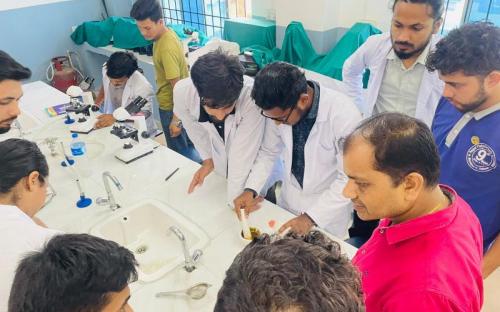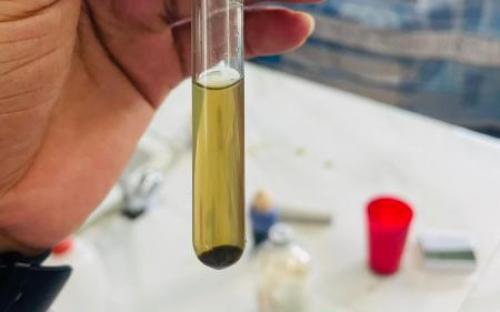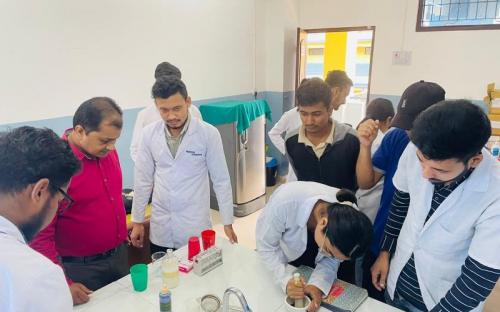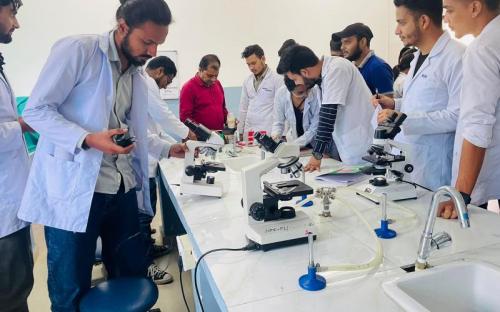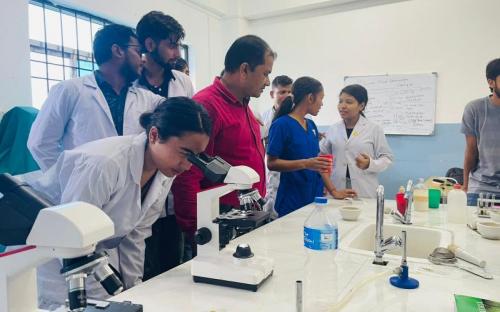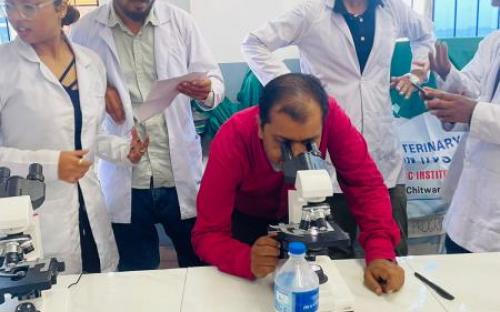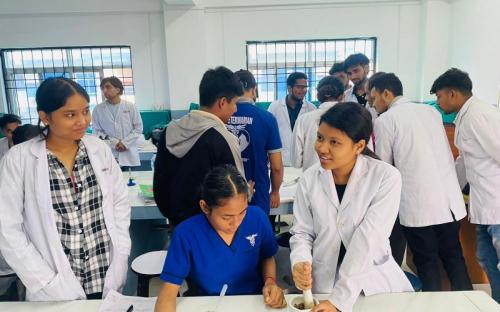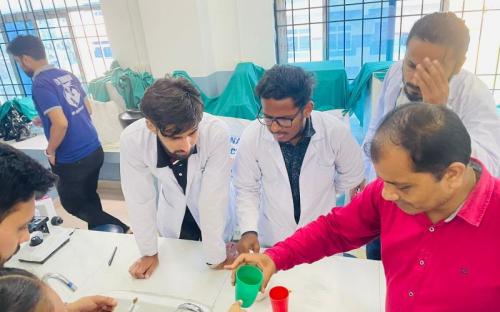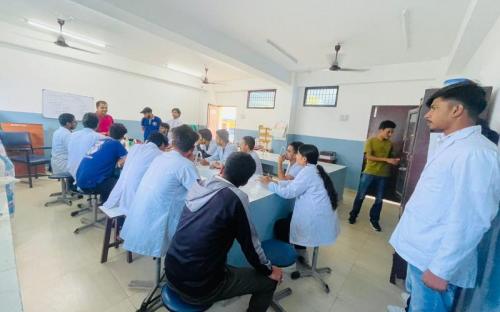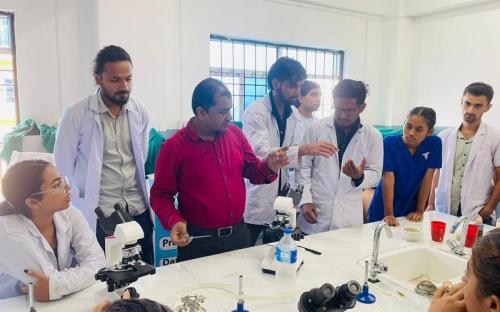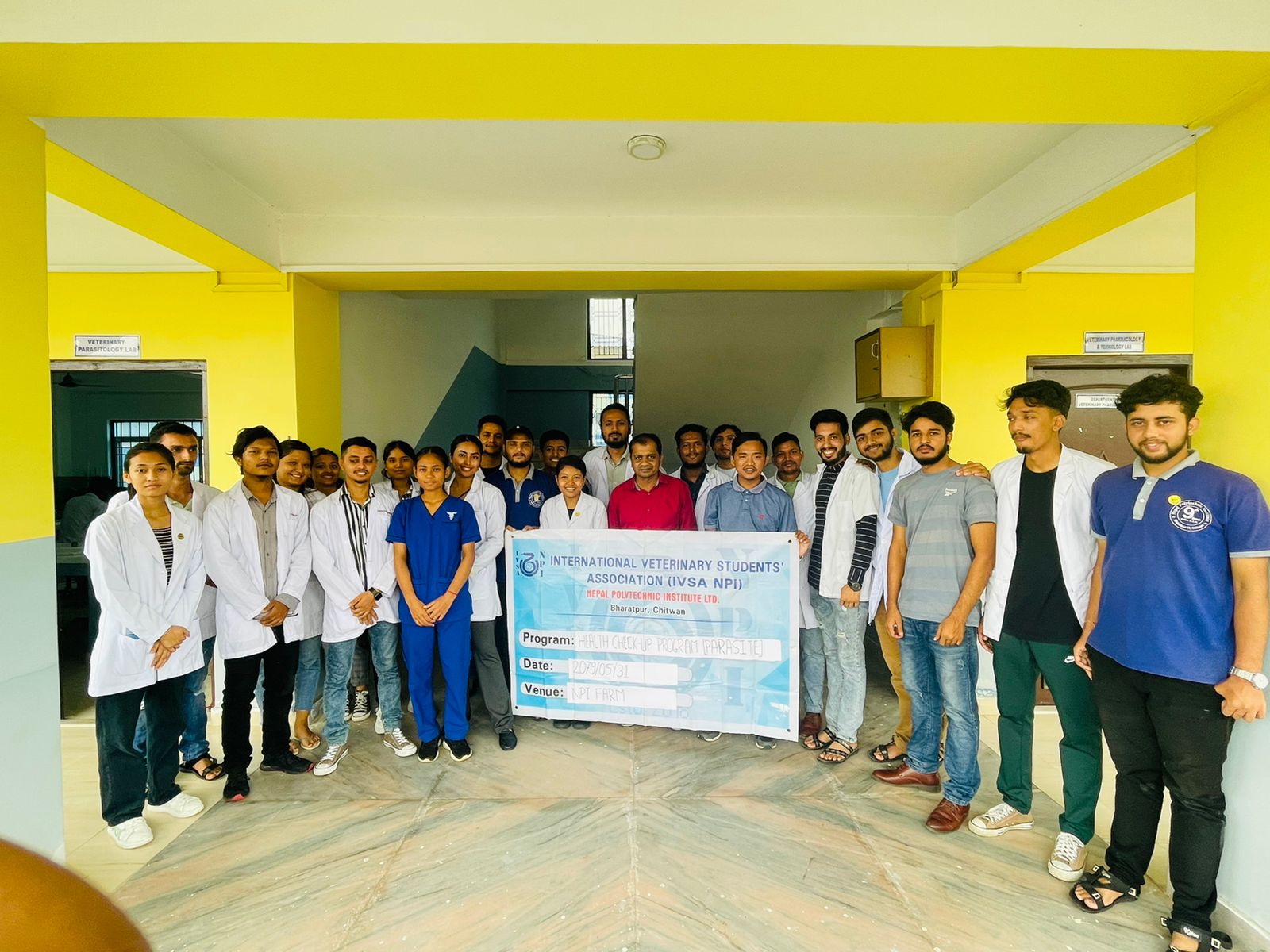
International Veterinary Students Association NPI ( IVSA NPI ) organized a “Weekly Health Check-up Program ” under SCoVE for students of B.V.Sc and AH with the motto of providing practical-based knowledge to veterinary students. We Would like to thank our teacher Dr. Naresh Kumar Shah for his guidance.
Fecal examination indicates diarrhoeic diseases, constipation, anorexia, jaundice, hepatitis, lungworm infection,
anemia, weakness, low milk production and anemia, weakness, low milk production, and in dysentery. Examining feces is mainly carried out to detect parasites, their ova/larva/oocyst, blood, and other foreign material. The fecal examination for the diagnosis of parasitic infections is probably the most common laboratory procedure performed in a veterinarian clinic. Sometimes cultural examination of feces is performed to the isolation of bacteria or viruses to establish the etiology of diarrhea/dysentery. The bacterial or viral antigens are also demonstrated in feces using immunological methods like immunofluorescence, enzyme-linked immunosorbent assay, and dot immunobinding assay. Parasitic worm eggs from the respiratory system may be coughed into the throat and swallowed and appear on the faces.
The procedure how to take feces:
* The operator places an obstetrical sleeve on one arm
* The arm is formed into a cone and the animal’s tail is held
to one side with the opposite gloved hand.
* Gentle pressure is applied to the anal sphincter until
penetration into the rectum is obtained.
* A fecal aliquot of sufficient size for the intended
laboratory procedure is scooped with the sleeved hand
and removed from the animal.
* The fecal sample is placed in a separate container or the
obstetrical sleeve is inverted of the arm such that the
fecal sample is trapped inside.
* Small calves, sheep, goats, and swine: restrain manually.
Gently pass a gloved, lubricated finger through the
anus and massage the rectal wall to stimulate rectally
evacuation.
* If feces are not produced, collect feces with a finger.
- Techniques of fecal examination in veterinary laboratory
After the fecal sample is collected from domestic animals, it would present to the laboratory for examination. The methods for the examination of the collected fecal samples are direct smear, flotation, and gross examinations.

